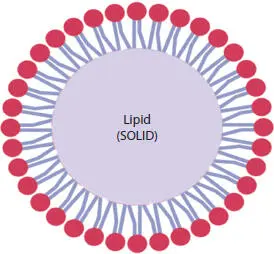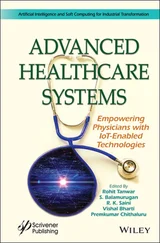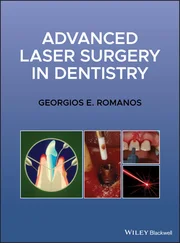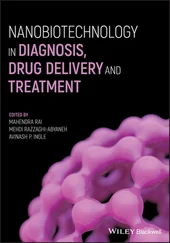SLNs have certain benefits in contrast to liposomes and emulsion, e.g., protecting the active compounds from chemical oxidation and offering greater versatility in amplifying compound release [12, 13]. Furthermore, lipid nanoparticles made of solid lipid and liquid lipid were explored by different research groups, which were used on a variety of routes such as parenteral, oral, dermal, ocular, or rectal and were thoroughly characterized [14, 15]. Nowadays, modified SLNs were known as nanostructured lipid carriers (NLCs) and nanoparticles lipid drug conjugates (LDCs) [13, 16, 17]. These carrier systems were able to resolve the issues observed with conventional SLNs.
A lipid nanocarrier system provides the drug with smaller droplet sizes in solubilized form offering a large surface area, which increases the activity of pancreatic lipases for the hydrolysis of triglycerides, and this will enable the faster release of the drug. Neoral ®(cyclosporin A) is a commercial product that is an excellent example of the utilization of these systems [18]. This carrier system has another advantage in that it can be used for clinical purposes because organic solvents can be avoided during the preparation process. A further advantage is that it is easy and cost-effective to produce.
1.3 Types of Nanocarriers
1.3.1 Liposomes
The most popular and well-researched nanocarriers are liposomes, which are synthetic phospholipid vesicles with a size of about 50–1,000 nm that can be loaded with a variety of drugs including hydrophilic and hydrophobic drugs. Figure 1.1depicts it all [19]. Originally liposomes referred to as smectic mesophase are monolamellar or multilamellar spherical vesicles that include phospholipids either of animal or plant origin. Liposomes were first discovered by AD Bangham and later on described by Allison and Gregoriad [20, 21]. Liposomes are spherical vesicles composed of bilayer lipids. They can encapsulate hydrophilic drugs within bilayer lipids due to their unique structure, and in the central aqueous core, hydrophilic agents typically protect the agents against degradation. Liposomes promote pharmacokinetics of loaded pharmaceutical active agents and provide higher loading efficacy, higher biological stability, controlled release, biological compatibility, and many others; the basic structural components of liposomes, i.e., phospholipids, are amphiphilic in nature [22]. These amphiphilic lipids get dissolved with an aqueous medium, and liposomes were aggregated by increased process entropy over certain concentration [23, 24]. In early days, liposomes were described as not containing surface modifiers, but later they were modified to differ in rigidity, size, and other properties by altering the composition of the lipid [25]. The next-generation liposomes were offered with molecular targeting capabilities through the attachment of unique ligands to their surface [26]. In addition, different ligands and functional molecules are easy to incorporate, thereby offering practical applications for the delivery of labile drugs and genetic materials. Liposomes also suffer from certain drawback, like other carrier systems. The development costs and all other aspects should be considered while developing a formulation to enhance drug therapeutic efficacy. The uses of sophisticated explants and tedious manufacturing process increase the cost of production of liposomes [27, 28].

Figure 1.1 Types of liposomes. (a) Unilamellar vesicle, (b) multilamellar vesicle, (c) immunoliposome, and (d) stealth liposomes.
1.3.2 Solid Lipid Nanoparticles
Solid lipid nanoparticles (SLNs) were introduced in 1991, which are the most conventional carrier system compared to other lipid carrier systems. Although some polymer-based nanoparticles were developed, still they have certain disadvantages such as toxicity, residual organic solvents, and processing complication [29, 30]. SLNs were incorporated into an inert solid lipid that offers sufficient stability and protection to encapsulated drugs as shown in Figure 1.2[31, 32]. SLNs also offer unique features of a small size range micro-colloidal carrier between 50 and 1000 nm, larger surface area, higher drug loading, and potential for delivering drugs across various barriers [33-36].
By definition, SLNs are submicron size nanoparticles composed of biocompatible and biodegradable solid lipids and are dispersed in aqueous surfactant solution; these mixtures are capable of providing a stable product for both lipophilic and hydrophilic drugs. For many years, they have become a promising platform for therapeutic drug delivery [37, 38] because they are simple, flexible, and stable for long term, have high drug loading efficacy, have potential for targeted responses [30, 31], have increased bioavailability, and do not require any special solvent and application versatility [33, 34]. SLNs for various routes of administrations such as dermal, parenteral, ocular, and rectal routes have been extensively studied and developed [39].
1.3.3 Nanostructured Lipid Carriers System
Nanostructured lipid carriers (NLCs) are a smart second-generation carrier system consisting of solid and liquid lipids. As we know, SLNs are the first-generation lipid nanoparticle that caused issue such as decreased drug encapsulation and storage instability. Later research turned towards the modification of SLNs that lead to the development of NLCs. This system consists of biodegradable and biocompatible lipids (solid and liquid); surfactants are approved for use in different drug delivery systems by regulatory authorities [16, 40]. NLCs have a whole range of unique benefits as compared to other systems such as higher drug loading capacity, more appropriate drug delivery system for various routes (topical, nasal, lung, ophthalmic, and parenteral), flexibility to modulate drug release, potential drug carrier in the future [41], minimal use of surfactants, etc. The usual diameter of NLCs range from 10 to 1000 nm. The amount of liquid lipid generally increases in such a way that nanoparticles evolve in the development of unusual shape, a non-perfect lattice, and create an amorphous structure. The solubility of the drug improves with the increase in the liquid lipid [42-45]. Nanorepair Q10 Serum (Dr. Rempler, Wedemark, Germany) and Nanorepair Q10 Cream (Dr. Rempler, Wedemark, Germany) were the first two marketed products of NLCs introduced by Muller in 1999/2009 and took 5 years to launch. More than 30 products are available in the market over the decades. The scientific community is also interested in the development of NLCs as an innovative drug delivery system. They are generally divided into three types and are described in Table 1.1and shown in Figure 1.3.

Figure 1.2 A graphical representation of solid lipid nanoparticle.
Table 1.1 Types of NLCs classified based on structure.
| S. No. |
Types |
Description |
| 1. |
Imperfect type |
Disordered structure.The lipid arrangement between the crystal and the liquid lipid is unordered, which enhances the drug’s capacity to penetrate. |
| 2. |
Amorphous type |
Lack of crystalline structure, which prevents/decreases drug leakage. |
| 3. |
Multiple type |
Provides higher levels of liquid lipid than other systems.Achieves slow drug release and high drug loading capacity, thereby avoiding decomposition of solid lipid.Similar to w/o/w microemulsion. |

Figure 1.3 Type of the nanostructured lipid carrier.
Читать дальше















